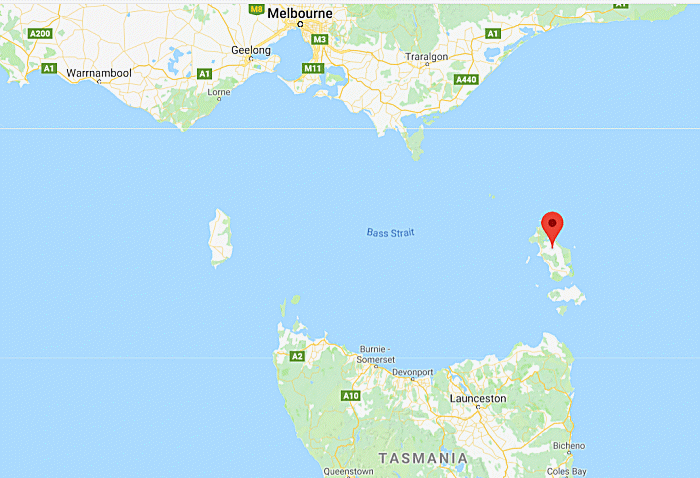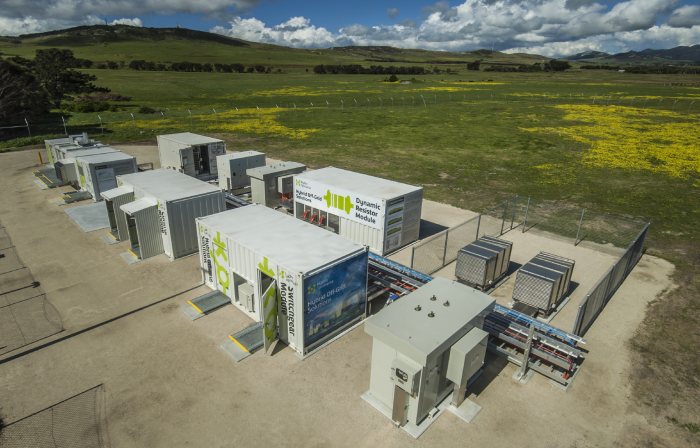
Image: Google Maps
The residents of Flinders Island now have a cleaner electricity supply – the island’s $13.38 million Hybrid Energy Hub was officially opened yesterday.
Flinders Island is a 1,367-square-kilometre island northeast of Tasmania in Bass Strait. It has a population of 833 according to the 2016 census.
To this point, Flinders Island has been very heavily dependent on generation from a 3 megawatt diesel-based power station, serving 6.7 gigawatt hours of annual customer demand
Implementation of the Hub will make the Island on average 60 per cent renewably-powered through the use of a 900kW wind turbine and a 200kW solar panel array. Other technologies used include a 750 kilowatt / 266 kilowatt-hour battery system, an 850 kilovolt-ampere flywheel and a 1.5 megawatt dynamic resistor. These elements are a modular design, enabling them to be scaled-up if necessary.

In periods where solar and wind resources are sufficient, Flinders will be 100% powered by renewables. The project will not only slash emissions, but electricity production costs as well.
Project owner, developer and operator Hydro Tasmania was assisted in establishing the Hub by $5.5 million in funding from the Australian Renewable Energy Agency (ARENA). Work commenced on project in August 2015.
“The Flinders Island Hybrid Energy Hub gives islanders a secure and cleaner future – consistent with the community’s vision of becoming permanently 100 per cent renewable in the future,” said Hydro Tasmania CEO, Steve Davy
Sarah Courtney, Parliamentary Secretary to the Tasmanian Premier, congratulated Hydro Tasmania on its achievement.
“The Hybrid Energy Hub reflects the best of Tasmanian ingenuity and, in addition to providing cleaner and more reliable power for Island residents, it will reinforce the clean image of Flinders Island produce and support the Island’s growing tourism industry.”
The Hybrid Energy Hub follows the success of Hydro Tasmania’s King Island Renewable Energy Integration Project (KREIP), which supplies more than 65% of King Island’s energy needs with renewables and has slashed carbon dioxide emissions by more than 95%.
The lessons learned from both these projects can be applied to isolated communities throughout the world, in disaster relief situations and may be useful to the mining industry.
Even without the newly added large solar array, Flinders Island’s residents have been doing very well on solar uptake under their own steam. Australia’s Clean Energy Regulator notes 159 small scale solar power systems installed on the island, with a collective capacity of 550kW.

 RSS - Posts
RSS - Posts



Speak Your Mind